|
|
|
|
|
WOW Well done Phil the manual you got has come in useful? Did you get the flange on the sump flat (around the bolt holes) before painting it? The manual has been invaluable. There is a very precise method to taking this thing apart. Just bashing at things taking a guess at it would definitely see it damaged. Yeah, wire wheel then orbital sander on the gasket face to flatten the peaks down before paint. Phil |
| |
Last Edit: Aug 4, 2019 11:09:37 GMT by PhilA
|
|
|
|
|
|
|
|
|
|
Today's plan is less ambitious. I want to pull the rear drum (the bigger of the two) off, remove the bearing carrier and inspect the center bearing.
The bearing serves two purposes; first, it supports the centre of everything and holds it all in line. Second, it has two oilways, one for each clutch.
The drums are built facing each other, with the clutch mechanism piston on each being closest to the bearing.
The piston is the full diameter of the drum, is held off with springs which are around the periphery of the inside of the drum.
There are multiple steel plates that are toothed to the center shaft, sandwiched with friction material like a racing clutch. They are squeezed together by the piston when fluid is pumped into it, locking the clutch.
However, if the hydraulics get a bit jacked up or the adjustment is wrong, it is possible for two gears (normally the clutch/drum positions for 1st and 3rd gear) to become engaged at the same time. The rear drum has greater grip than the front and will just slip the front clutch until it shreds itself.
More modern gearboxes avoid this by having the gear position valves compounded into a single long shaft that slides through multiple positions, rather than this design of 3 valves with 3 independent springs to operate them.
That way the gearbox cannot (unless there's a severe failure) in normal running attempt to engage two ratios at once.
The pressure relief valve was stuck in the bottom of the valve bore, too. That's also not good for this. The valve block will be coming apart to be cleaned and inspected. The governor main weight valve slides freely, but the book says there's a second valve opposite it that must also freely slide. I cannot see anything moving so that may be a problem too; the governor valve is what opens up progressively with road speed and applies pressure to the valve block against the gear change valves, making them open in sequence to change their the gears.
Phil
|
| |
Last Edit: Aug 4, 2019 11:05:11 GMT by PhilA
|
|
CaptainSlog
Part of things
 
Posts: 510
Club RR Member Number: 180
|
1951 Pontiac ChieftainCaptainSlog
@captainslog
Club Retro Rides Member 180
|
|
|
|
Phil, please take and post loads of photos, the guts of that trans are a thing of beauty to me.
|
| |
|
|
|
|
|
|
|
Shall do. I have all the valve block and pumps to tear down and inspect/clean yet.. I want to remove every last part of the swarf. 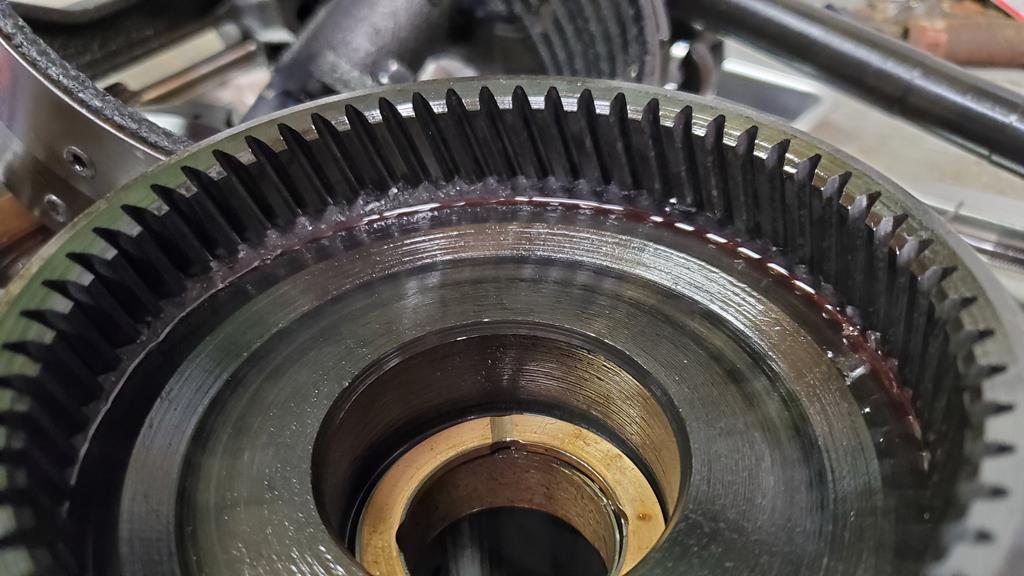 It's gotten everywhere. However, most of the gears and bearing surfaces so far just show high mileage wear, but are still in really good shape. This is one advantage of spreading the engine load over multiple gears, there's much more in the way of teeth in contact at any one time. Phil |
| |
|
|
|
|
|
|
|
Well, source of the swarf identified. 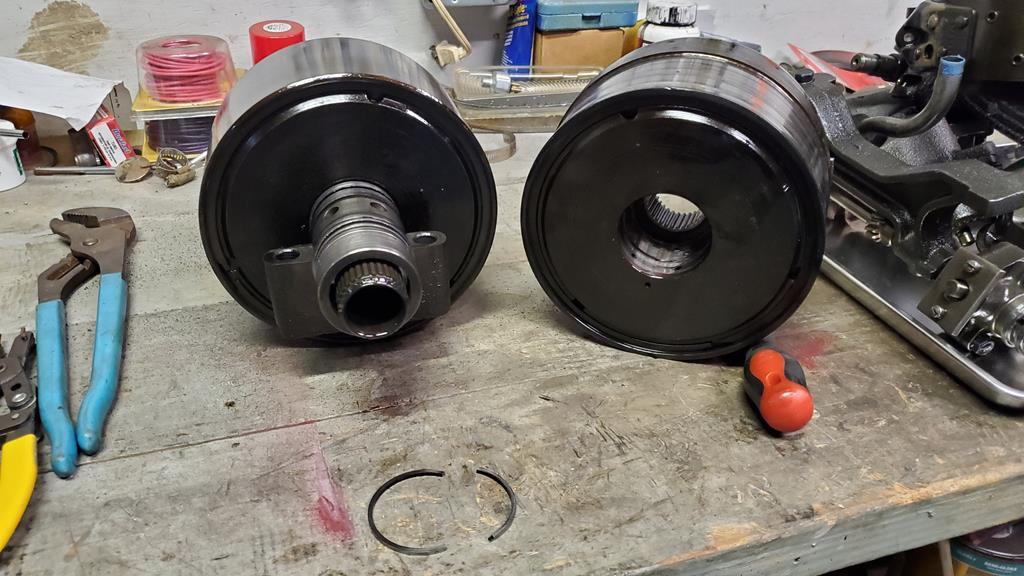 A broken oil control ring. 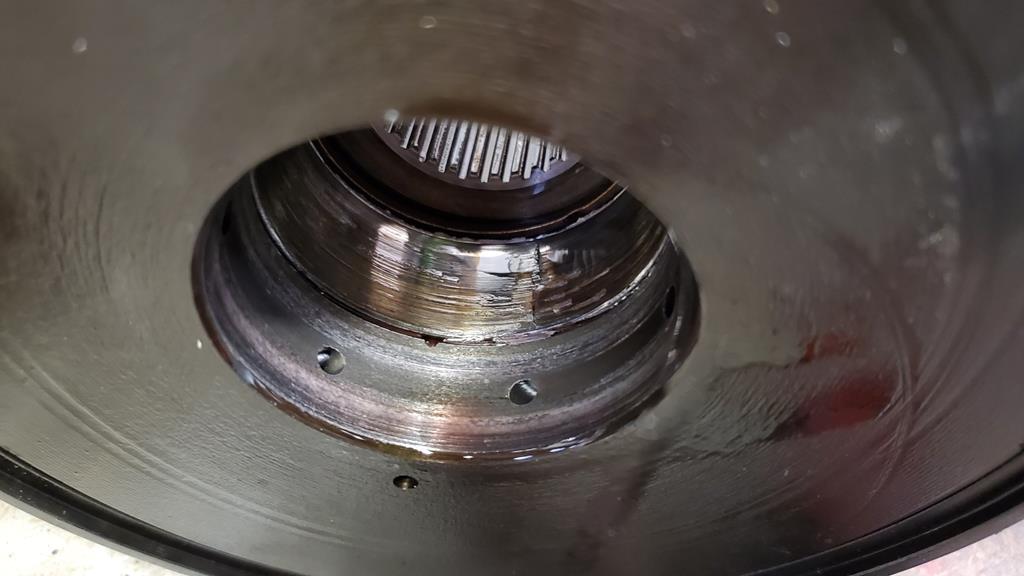 Drum is toast. 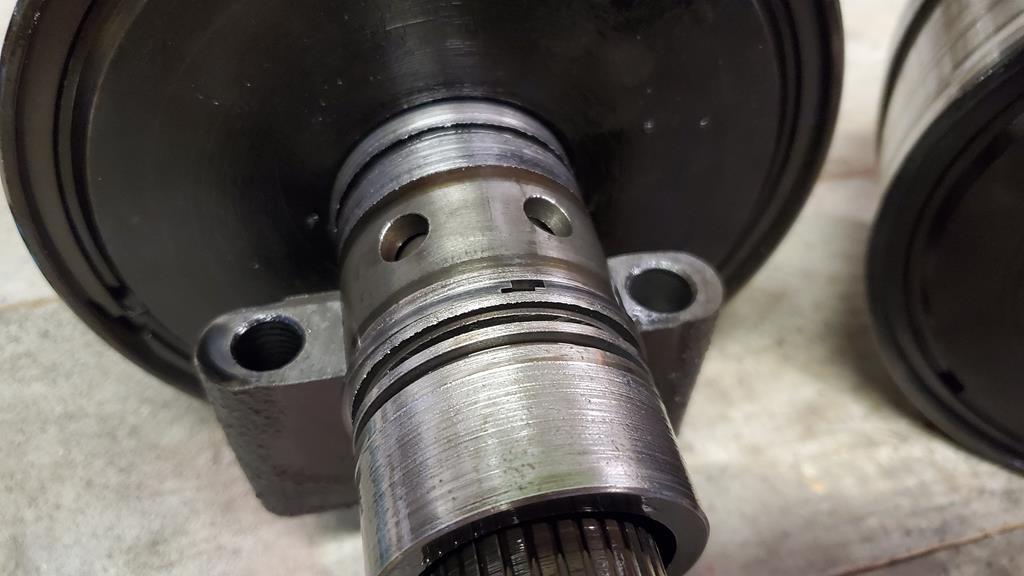 Drum carrier is also toast. That's new carrier and epicyclics on the shopping list, then. Phil |
| |
|
|
|
|
1951 Pontiac Chieftainjohnthesparky
@johnthesparky
Club Retro Rides Member 6
|
|
|
|
Can you still get those parts?
I would have liked the post, but it’s not nice to see knackered parts
|
| |
|
|
|
|
1951 Pontiac Chieftainpeteh1969
@peteh1969
Club Retro Rides Member 107
|
|
|
|
That looks a bit banjaxed.
Are the parts still available even if for a slightly younger model?
|
| |
|
|
jamesd1972
Club Retro Rides Member
Posts: 2,921  Club RR Member Number: 40
Club RR Member Number: 40
|
1951 Pontiac Chieftainjamesd1972
@jamesd1972
Club Retro Rides Member 40
|
|
|
|
What’s the parts availability like Phil ?
Available at a price ?
James
|
| |
|
|
|
|
|
|
|
|
The AACA came through- I've been given a lead to an automatic transmission specialist in New Jersey who deals with Hydra-Matic boxes- I'm going to get in touch with them and see if they have the parts.
Phil
|
| |
|
|
|
|
|
|
|
|
Looks like that may have been sleeved by design.
I think the ring dug in and spun the sleeve. Now there's no sleeve left. Unsure. Going to poke about a bit.
Phil
|
| |
|
|
|
|
|
|
|
|
Central carrier is available new $95
Gonna pull the other drum off and inspect.
Phil
|
| |
|
|
|
|
|
|
|
Root cause analysis: 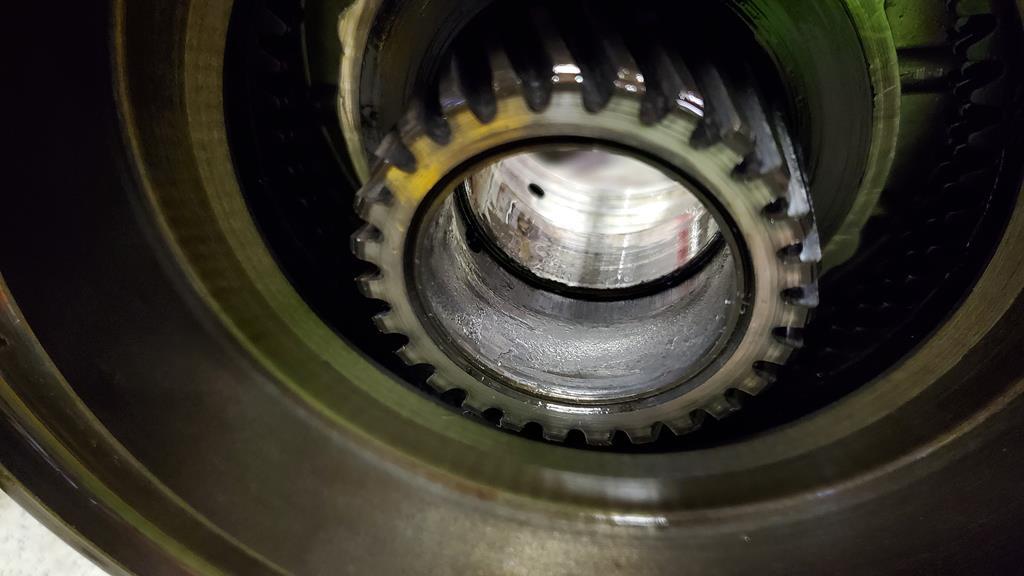 Centralizing bearing set in primary drum failed. This then allowed the drum (pulled by the friction band) to sit off-center and contact the machined section where the fluid delivery sleeve allows the annular piston to slide a little, causing it to be overrated and chewed up, fracturing the oil control ring. So, the bushing inside is toast, the machined sections where the rings go are toast. We talking at the worst slack about 1/16" clearance. So, two new drums and a fluid control sleeve. Gonna call up the transmission place during the week. www.fatsco.net/(hydramatic).htmlB9 failed, causing B10 to fail. 8 and 9 then came in forceful contact with B11. The rest is history. Phil |
| |
Last Edit: Aug 4, 2019 22:16:16 GMT by PhilA
|
|
fer4l
Posted a lot
   Testing
Testing
Posts: 1,497
Club RR Member Number: 73
|
1951 Pontiac Chieftainfer4l
@fer4l
Club Retro Rides Member 73
|
|
|
|
Gutted for your problems but just posting to say how much I love the way you work
Cheers, Matt
|
| |
|
|
|
|
|
|
|
|
Hey, it's all good. I bought this with full knowledge it had issues (which is why it was cheap!).
It's an expensive failure but eh. Once corrected it should do another 100,000 miles.
Phil
|
| |
|
|
|
|
|
|
|
|
Fascinating stuff to read!
|
| |
|
|
|
|
|
|
|
|
Another transmission place with a la carte preloved-but-good parts for sale, 160 for each hub.
Not too bad
|
| |
|
|
|
|
|
|
|
Fascinating stuff to read! Isn't it though? Like many, I have an auto box. I change the oil and filter, I move the lever into D for go, or R for backwards, I'm aware that there's high/low ratio Land Rover stuff going on as well, but when I press the right hand pedal, things happen. No idea what, but they do. I know that this is an older technology, but the result is the same. Press the right hand pedal and things happen. I love auto but it's a dark art to me. As blackpopracing says, fascinating.  |
| |
Last Edit: Aug 5, 2019 13:23:46 GMT by georgeb
|
|
|
|
|
|
|
|
George, I had typed this up- it may help a little in describing how this does what it does.
The gearbox is specified in a strange way compared to automatic gearboxes I am used to. Most modern automatics have the engine drive the torque converter housing, which turns the pump, and the inner vanes of the torque converter drive the mainshaft. The output of that is then passed through the reduction gears.
Pontiac specified that the vehicle should not creep at idle, in Dr (drive) position. Even with the engine idle specced lower than the manual gearbox version (375 versus 550 RPM) the fluid coupling imparts enough force at 375 RPM to move the car forwards. At a guess the rationale for this was to not alienate their customers who had never experienced an automatic gearbox before.
Get in, sit down, start up and put it into gear, look there, the car does not move.. gently squeeze on the gas pedal sir.. there, the car begins to move- press a little harder, and just take your foot off the gas and onto the brake to stop. Yes, just like that sir, isn’t that a fantastic marvel of modern technology?
To stop the car from creeping yet retain an acceptable idle (the engine gets a bit unhappy as it approaches 300 RPM or lower) the engine drives the outer coupling housing directly (which is not connected to either inner torus) and that is taken inside the gearbox and through a 1.45:1 epicyclic reduction gear. The output of that is then sent back to the driving torus at 7/10 the speed of the input. As a result the driving torus is turning at about 260RPM at idle. At this speed it does not impart enough torque into the driven torus to move the car.
The output of the driven torus goes back deep inside the gearbox and drives a second epicyclic reduction gear of 2.63:1 ratio. The two gears driving each other in reduction results in an overall gearbox ratio of 3.82:1 in first gear.
The epicyclic reduction gears can be locked by the internal clutches to either reduce the output speed or be locked solid at 1:1 ratio. Combining the 2 clutches in a binary style fashion (00 01 10 11) provides 4 reduction options- 3.82:1, 2.63:1, 1.45:1 and 1.00:1 (direct).
The final drive passes through a third epicyclic gear, which, by holding the planet set still with a clutch will reverse the motion of the output shaft and provide a reverse gear. It is also locked out internally to first gear full reduction only- without that there would be 4 speeds in reverse with a top speed of about 60mph. Not ideal!
The gearbox also has a few interesting design features- two oil pumps, one on the engine driven side, the other on the output shaft. This is to allow oil pressure to be built up as the vehicle is towed, for two reasons. First, it provides lubrication without the engine running, second it provides oil pressure so that if the transmission is dropped from N to Dr it will engage a gear and be capable of bump starting the engine.
The oil pumps are designed to provide high pressure at low speed. This pressure is kept constant by a spring relief valve. The gears are selected by valves with varying strength springs. A governor valve (centrifugal weight that spins with road speed) increases pressure on the valves as the road speed changes, initiating gear changes. The throttle pedal is attached to the gearbox and serves two functions. First, it opens a valve that applies main pressure to the opposite side of the gear shift valves, meaning greater governor pressure needs to be built up before the valves will move and gear changes occur. Second, as the gears are changed it adds boost pressure to the servos so the bands clamp more firmly and quickly. This makes low speed, light throttle gear changes smooth to engage at low speed, and hard acceleration changes to snap tight quickly at higher road speeds.
It all sounds good but there are a lot of moving parts that all need to move in synchrony. If something jams, it’ll either disengage drive fully or attempt to engage two gears at once which causes undesirable operation, neck-snapping jerks in the drive or a redline-flare of the engine. In this case, it would change gear at a much higher RPM/roadspeed than it should have, and only when the throttle was snapped shut. Hopefully that can be remedied.
|
| |
|
|
|
|
|
|
|
|
Well, good news. I am in the middle of an email chain with Mike at Fatsco Transmission, and he says they have the parts I need to rebuild this failure for $308 all in.
I need to pull the front assembly apart to count the teeth because there are 2 ratios used on this model and the onyyl way to make sure which one I need is to count the teeth on the sun gear.
There is hope
--Phil
|
| |
|
|
|
|
|
|
|
|
Enjoying the gearbox rebuild and good to know you can source the parts, Ive never liked autos as they always seem mega complex but this doesn't actually look too bad!
|
| |
|
|












